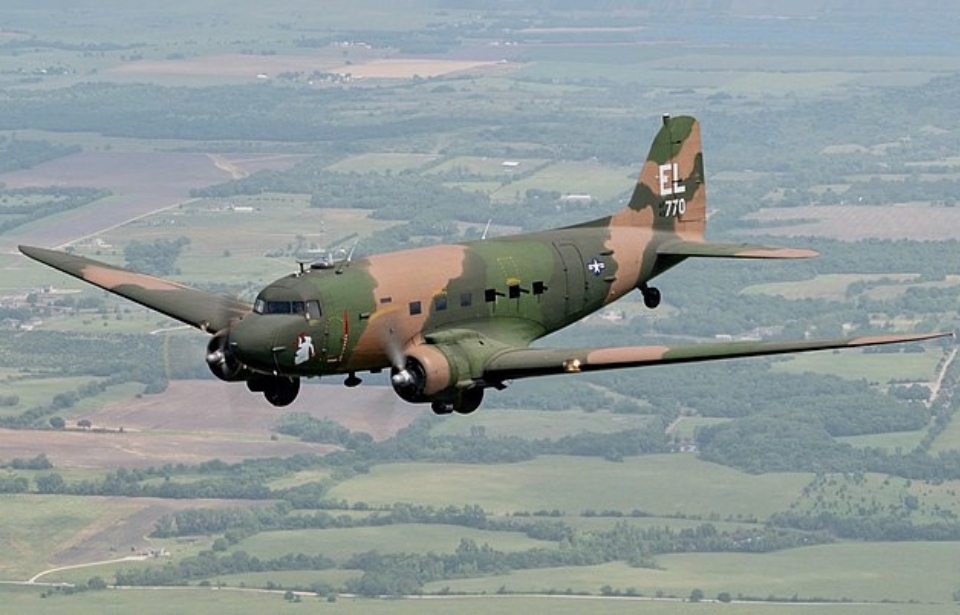“Puff, the Magic Dragon” wasn’t just a popular ’60s song by Peter, Paul and Mary, it was also the nickname for the Douglas AC-47 Spooky, the predecessor to the Lockheed AC-130. The AC-47 was a repurposed cargo aircraft that became the first fixed-wing gunship operated in Southeast Asia, and it got its nickname, “Puff, the Magic Dragon,” from the glowing red emissions that lit up the sky while the aircraft was in the air.
Deployment of Douglas C-47 Skytrains to Vietnam
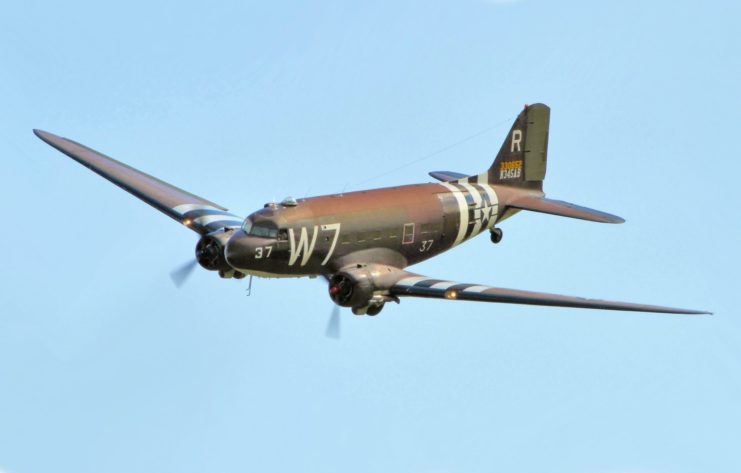
The predecessor to the AC-47 Spooky was the two-engined Douglas C-47 Skytrain, which was flown extensively by the Allies during the Second World War. The C-47 was brought to Vietnam in November 1961, but was mainly flown as a transport and cargo gunship by the Americans.
Many C-47s were outfitted as “flare ships” and designated FC-47s (“F” for flare, in this case). They’d drop parachute flares over enemy positions during night attacks, and, by November 1963, had deployed more than 7,000.
Development of the Douglas AC-47 Spooky
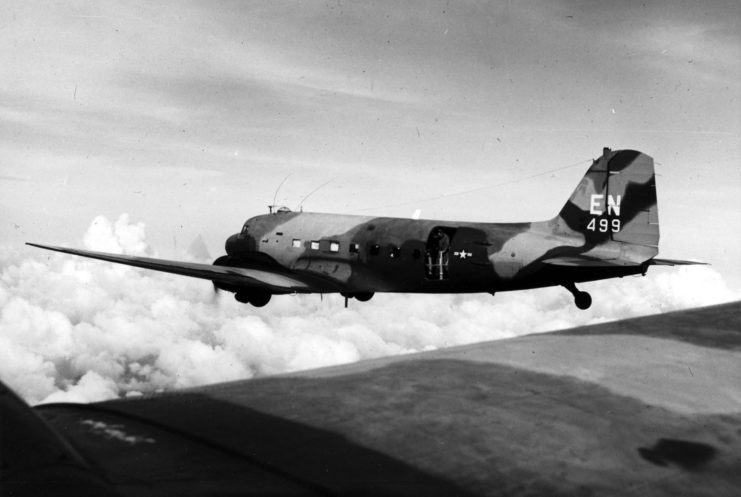
By 1963, the Viet Cong were ramping up guerrilla night activity and it was becoming increasingly apparent that a better night air effort was necessary for the American forces. After much deliberation, the US Air Force accepted what’s now the modern concept of the fixed-wing gunship.
This refers to a fixed-wing aircraft that has laterally mounted heavy armaments. Side-firing gunships weren’t a new idea. In fact, the concept had been proposed in the years leading up to World War II. However, it wasn’t until 1963 that it became a reality.
The C-47 Skytrain was initially chosen as the test aircraft for the first fixed-wing gunship because it met all the necessary criteria. The effectiveness of this type of gunship depended on the aircraft’s ability to direct concentrated fire on specific enemy positions. It also needed enough power and space to carry the necessary armaments. The C-47 was chosen because it was a cargo ship, meaning it could hold a lot of munitions. It was also propeller-driven, which would allow for precise maneuvers to be conducted.
‘Spooky’ experiments
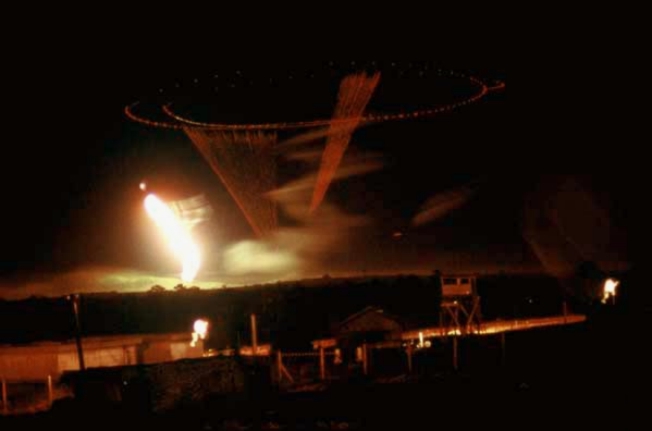
By mid-December 1964, modifications to the C-47 Skytrain were completed. Initially, this new type of aircraft was designated the FC-47, for “fighter/cargo.” However, fighter pilots were upset with the “fighter” categorization; they refused to believe that a slow cargo aircraft could be a fighter. To appease them, the new aircraft was designated AC-47, meaning “attack/cargo.”
Testing of the AC-47 began in Vietnam in late 1964. On December 14, it flew its first daytime combat mission, firing on enemy boats, trails and staging areas. The aircraft’s first night mission occurred on December 23, 1964. During the attack, the AC-47 fired over 4,500 rounds of ammunition and dropped a total of 17 flares. Its efforts successfully halted the Viet Cong assault.
The AC-47 continued to be successfully tested throughout early 1965. In fact, these trials were so successful that an AC-47 was sent to the United States to provide crew training. That July, the US Air Force ordered officers with Training, Advising and Counseling (TAC) to establish an AC-47 squadron. In August, the 4th Air Commando Squadron was created. It operated five aircraft upon its inception, with 26 equipped by the end of the year.
Weaponizing the Douglas AC-47 Spooky
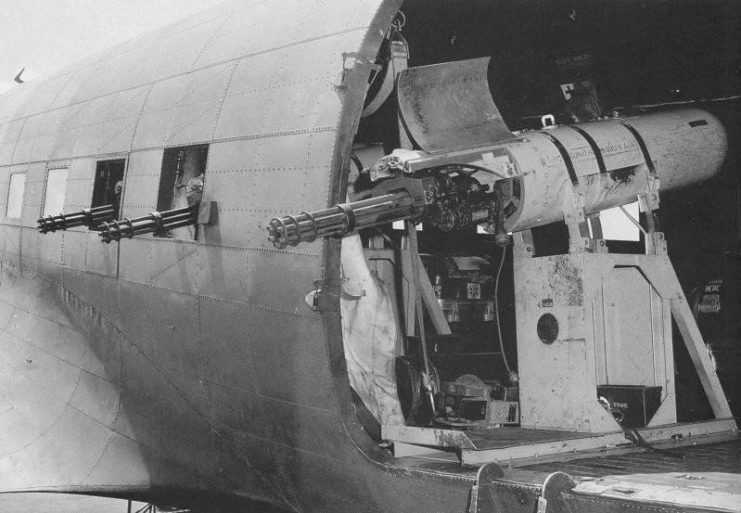
The external arrangement of the C-47 Skytrain remained intact as it was turned into an attack aircraft. Three M134 Miniguns were mounted internally to fire through two rear window openings and the side cargo door. These were on the left side of the aircraft – the pilot’s side.
Positioning these weapons on the aircraft’s left side was essential, as it provided close-air support to ground troops. They had a rate-of-fire of 6,000 RPM – or, in other words, they could cover every square foot of a football field with one round a minute. A MK.20 Mod.4 gunsight was also mounted in the left cockpit window.
The M134 Miniguns could be controlled by the pilot or by the gunners. However, the former primarily operated them, as the controls were on their yoke. Gunners were kept aboard the AC-47 primarily to monitor the guns’ performance and make any necessary repairs.
From ‘Spooky’ to ‘Puff’
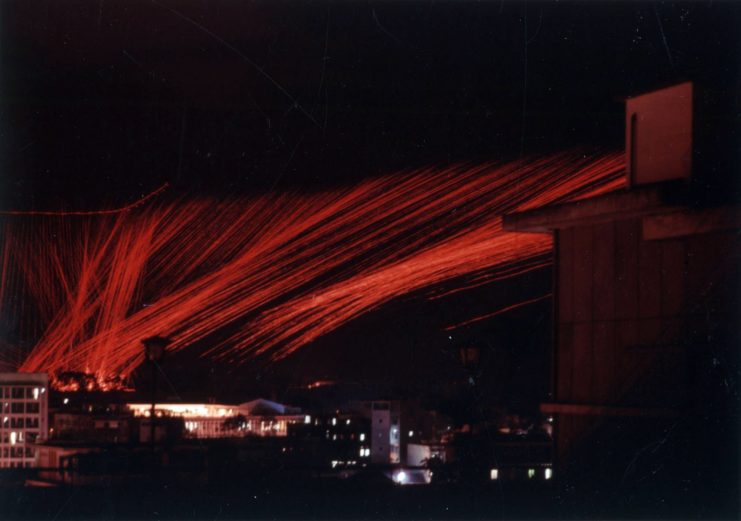
As the AC-47 Spooky saw more action, its nickname changed. “Puff, the Magic Dragon” was the moniker given to the aircraft by ground troops. Not only did it spew glowing red emissions, but the roar made by the M134 Miniguns sounded just like a roaring dragon. In fact, the nickname became so mainstream that its official sign was changed from “Spooky” to “Puff” in some areas.
As the number of aircraft and crews increased, the 4th Air Commando Squadron deployed the AC-47 to Nha Trang, Đà Nẵng, Pleiku, Biên Hòa and Binh Thuy. In 1956 alone, they flew 277 combat missions and fired 137,136 rounds and 2,548 flares.
During this initial start-up period, the 4th Air Commando Squadron only lost two AC-47s, making the US Air Force confident in the aircraft. The aircraft distinguished itself across an estimated 4,000 missions in South Vietnam and Laos, accounting for over 5,300 enemy kills.
Replaced by newer, more modern gunships
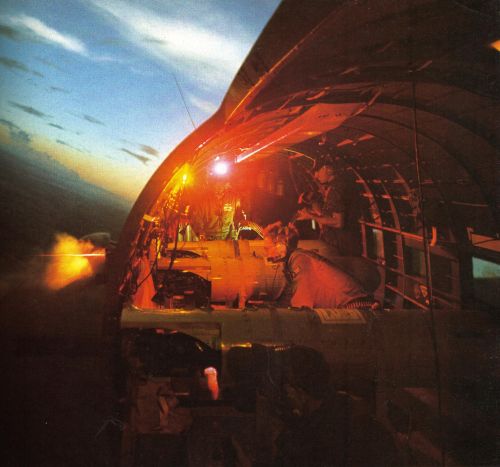
By 1969, the Ac-47 Spooky was beginning to show extreme wear and tear. It wasn’t practical to keep rebuilding and maintaining the gunships, especially as the more sophisticated AC-130 and Fairchild AC-119s were beginning to arrive in Vietnam.
Slowly, Puff, the Magic Dragon was transitioned out of mainstream use, and the last American AC-47 combat mission happened on December 1, 1969. Of the 53 delivered to Vietnam, about 41 of them saw combat during the Vietnam War.
The AC-47 was eventually replaced first with the Lockheed AC-130A Spectre, followed by the AC-119G Shadow, AC-119K Stinger and, finally, the AC-130E Pave Spectre. While these gunships were more modern, they wouldn’t have been as effective if it hadn’t been for the success of Puff, the Magic Dragon.
Other nations have equipped the Douglas AC-47 Spooky
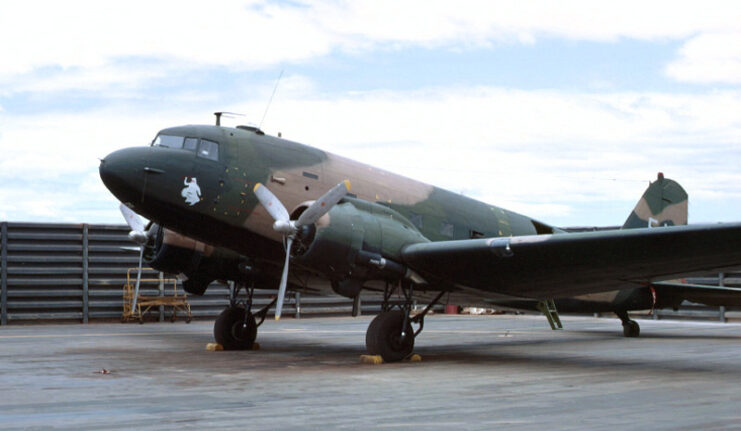
While the US Air Force retired the AC-47 Spooky from active duty, other air forces worldwide have – and still – equip the aircraft. In December 1984 and January ’85, the United States supplied two to El Salvador and trained crews on how to operate them. As well, Thailand, Cambodia, South Africa and Uruguay were among the countries to once fly the gunship.
More from us: C-5 Galaxy vs C-17 Globemaster III: What’s the Difference Between These Cargo Aircraft?
Want War History Online‘s content sent directly to your inbox? Sign up for our newsletter here!
Currently, the Columbian Air Force is the only one to still fly the AC-47, a variant known as the Basler BT-67. The 214th Tactical Air Support Squadron has about six in its inventory.
